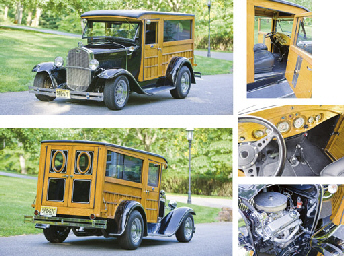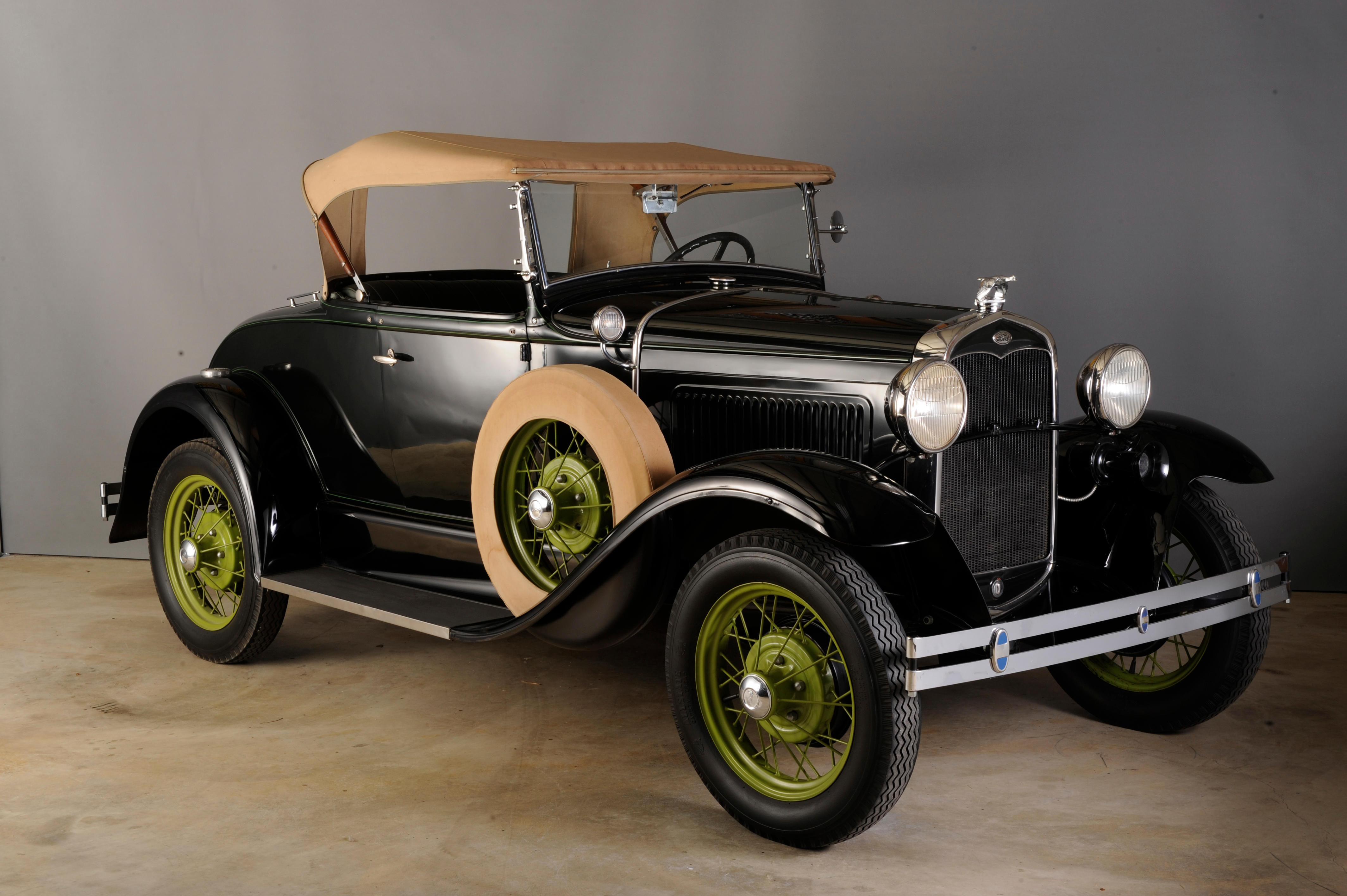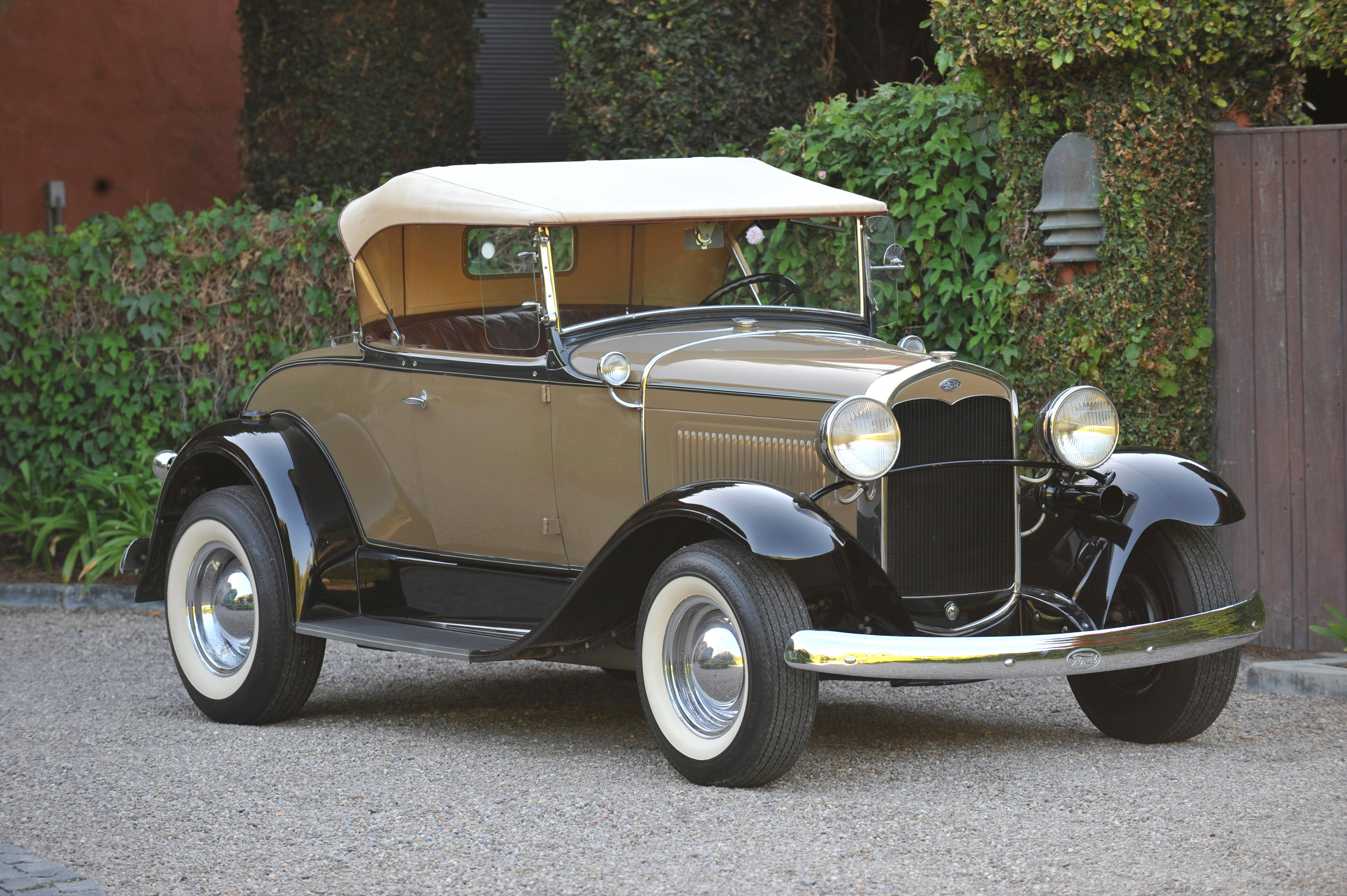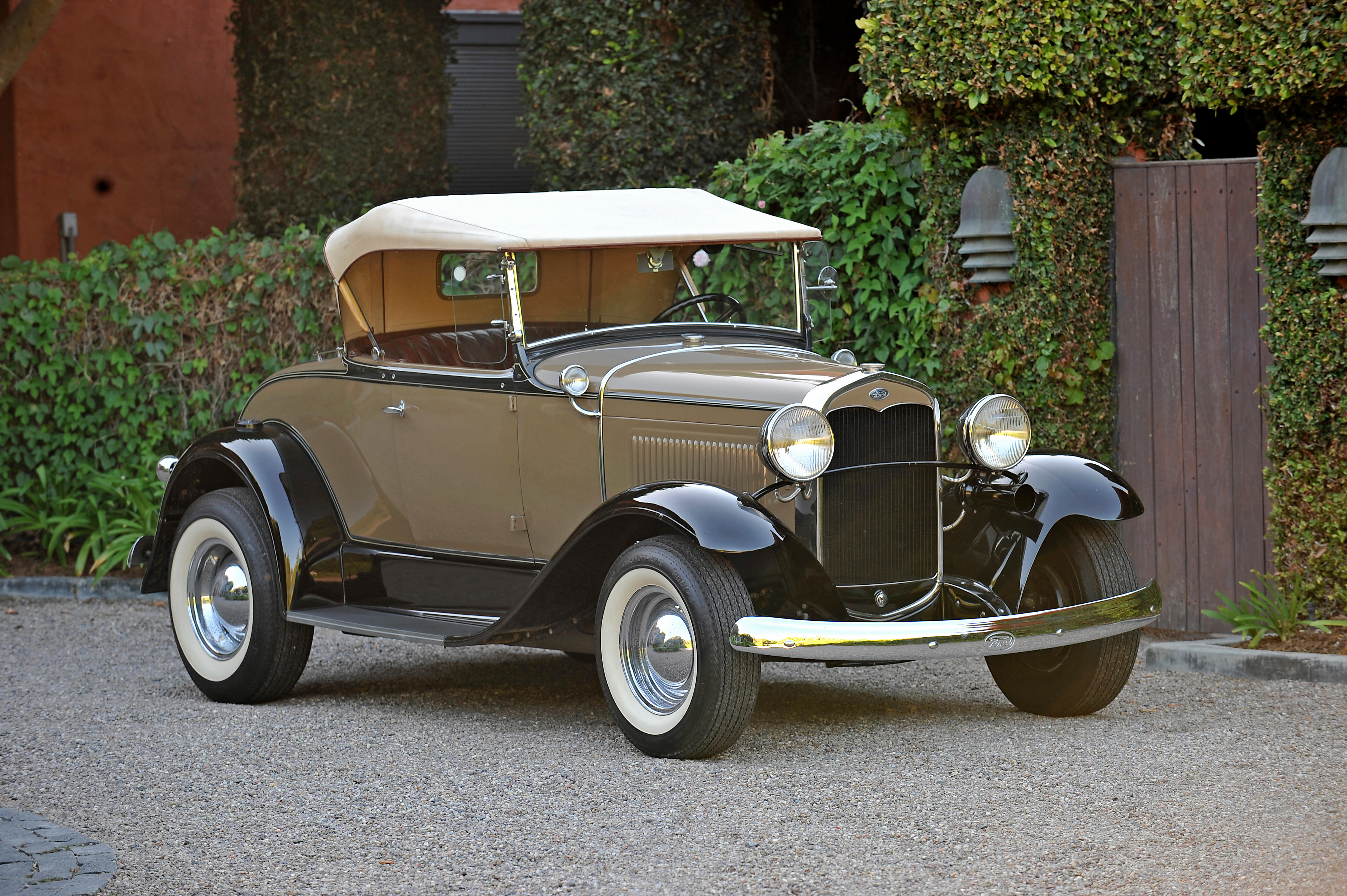1931 FORD MODEL A "WOODY" STATION WAGON Engine No. A3558350 Beige and black with natural wood finish and dark brown interior Engine: four cylinder, in-line, 200.5 cu. in. giving 40bhp at 2,200rpm; Gearbox: three-speed manual; Suspension: solid axle with leaf-springs; Brakes: four wheel drum. Left hand drive. Compared with its Model T predecessor the Model A had a much shorter production life, amounting to about five years. Even in those times, four and a half million examples were sold - a record that stands today. The rugged 3.3 litre side-valve engine provided 40bhp at 2,200rpm. With its three-speed sliding type gearbox, it was capable of tackling any road conditions due to its immense low down torque and thus provided the ideal chassis for differing body styles. Among the options were a variety of models ranging from a two-door roadster to a coupe, to a four-door, to a pick-up truck and wooden station wagon, as on offer here today. With few exceptions, wood has been almost exclusively for Ford automobile body frameworks and interior trim until the wood bodied station wagon came along as a new model in April 1929. Unlike the rest of the Detroit establishment, Ford was one of the few to actually produce its own wood bodies. Nearly all the rest were built by independent contractors such as Ypsilanti Furniture, J.T. Cantrell and Hercules. Ford station wagon bodies were built from wood harvested at the company's Iron Mountain timber mills in Michigan's Upper Peninsula. Much of the wood used to build Ford station wagons went into the construction of the headliner, which consisted of long, white ash slats; the inside door panels were mahogany and the outside panels a combination of mahogany and birch. The stylish four-door, wood-bodied station wagon was the second most expensive model in the Ford line, priced at $625 in 1931. A total of 2,848 were produced in the Model A's final year. While 1931 marked the end of the Model A era, the "Woody" - a nickname given the cars many years later - remained in the Ford line until civilian automobile production was officially halted on February 2, 1942 and the last American automobile, a Ford Sedan, rolled off the assembly line. The Ford wood-bodied station wagon was one of the first models back into production after the war. Daniel Sargent purchased this Woody from the famous Harrah's Automobile Collection in the early 1980's. At Harrah's this genuine Woody received a 'Gold star' restoration. The 'Gold star' designation required that each restoration was to be completed to original factory specifications with performance to match. The beautiful restoration has now mellowed a little, yet overall this seems to be a superb example. In recent years collectors and public interest in all types of Woodys has taken a huge resurgence and events, such as the Louis Vuitton Concours d'Elegance, have even introduced classes for Woodys.
1931 FORD MODEL A "WOODY" STATION WAGON Engine No. A3558350 Beige and black with natural wood finish and dark brown interior Engine: four cylinder, in-line, 200.5 cu. in. giving 40bhp at 2,200rpm; Gearbox: three-speed manual; Suspension: solid axle with leaf-springs; Brakes: four wheel drum. Left hand drive. Compared with its Model T predecessor the Model A had a much shorter production life, amounting to about five years. Even in those times, four and a half million examples were sold - a record that stands today. The rugged 3.3 litre side-valve engine provided 40bhp at 2,200rpm. With its three-speed sliding type gearbox, it was capable of tackling any road conditions due to its immense low down torque and thus provided the ideal chassis for differing body styles. Among the options were a variety of models ranging from a two-door roadster to a coupe, to a four-door, to a pick-up truck and wooden station wagon, as on offer here today. With few exceptions, wood has been almost exclusively for Ford automobile body frameworks and interior trim until the wood bodied station wagon came along as a new model in April 1929. Unlike the rest of the Detroit establishment, Ford was one of the few to actually produce its own wood bodies. Nearly all the rest were built by independent contractors such as Ypsilanti Furniture, J.T. Cantrell and Hercules. Ford station wagon bodies were built from wood harvested at the company's Iron Mountain timber mills in Michigan's Upper Peninsula. Much of the wood used to build Ford station wagons went into the construction of the headliner, which consisted of long, white ash slats; the inside door panels were mahogany and the outside panels a combination of mahogany and birch. The stylish four-door, wood-bodied station wagon was the second most expensive model in the Ford line, priced at $625 in 1931. A total of 2,848 were produced in the Model A's final year. While 1931 marked the end of the Model A era, the "Woody" - a nickname given the cars many years later - remained in the Ford line until civilian automobile production was officially halted on February 2, 1942 and the last American automobile, a Ford Sedan, rolled off the assembly line. The Ford wood-bodied station wagon was one of the first models back into production after the war. Daniel Sargent purchased this Woody from the famous Harrah's Automobile Collection in the early 1980's. At Harrah's this genuine Woody received a 'Gold star' restoration. The 'Gold star' designation required that each restoration was to be completed to original factory specifications with performance to match. The beautiful restoration has now mellowed a little, yet overall this seems to be a superb example. In recent years collectors and public interest in all types of Woodys has taken a huge resurgence and events, such as the Louis Vuitton Concours d'Elegance, have even introduced classes for Woodys.















Try LotSearch and its premium features for 7 days - without any costs!
Be notified automatically about new items in upcoming auctions.
Create an alert